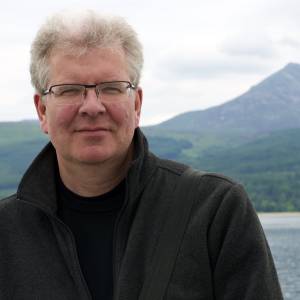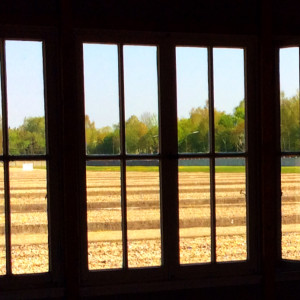Arbeit Macht Frei
It's 39 years since I last visited Dachau Concentration Camp. The impact it made on me then has faded a little during the decades and our intervening visit to Auschwitz, an extermination camp that took the machinery of mass murder to new levels of scale and efficiency, had, perhaps, put Dachau into a second plane.
It all came flooding back today viewing the bi-lingual exhibition panels in the very rooms where unrestrained brutality was deployed in the most systematic, sustained and sadistic manner imaginable . . . and this on top of the overcrowded living conditions (barracks designed with fifty two sleeping places were accommodating two thousand men by 1944), paltry, sub-human rations and 16-hour working days of hard, often pointless, labour like, for example, moving piles of rock from Point A to Point B, and then back again, every day, seven days a week.
You could be hung from a hook by your bound wrists with your arms twisted up your back for an hour, if you so much as left a coffee stain on your mug or there was an indent in your straw mattress after you had made your bed . . . or simply shot - the regulations of the camp allowed for indiscriminate summary executions by the SS members who ran it/ran amok in it.
The camp opened up in 1933, very shortly after Hitler became Chanciller, and only closed when it was liberated in 1945. 200,000 people passed through here including over 31,000 Germans. Jews were in the minority as they were only brought in if they were also political dissidents and, even then, they were usually moved out to the extermination camps in short order. Over 40,000 of the concentrees were murdered here, one way or another, including a much-loved Austrian cabaret artist who entertained his fellows as best he could until he succumbed to the conditions at the age of 59. It reminds me of the writings of Victor Frankl in his book, In Search of Meaning. He was an Auschwitz survivor and wrote, 'The last freedom we have is to choose the attitude we adopt in the face of the circumstances in which we find ourselves.' Our Austrian entertainer, I am sure, found meaning through his decision to 'make 'em laugh' for as long as he could. Bless him.
Dachau featured in the national press as early as 1933. The articles described the inhabitants as 'unmentionable bastards' . . . the photo spreads showed lines of men in striped uniforms and shaven heads, men crowed into triple level bunks and SS guards with rifles slung over their shoulders, overseeing the scene. We have become very familiar with these kind of photos after the camps were discovered in 1945, but these photos appeared in the German national press in the Thirties. Everyone knew. And that's not to mention the near hundred or more sub-camps associated with Dachau in the immediate area, a pattern replicated all over Germany.
It's also worth mentioning that some distinguished dissidents including senior clergy were also detained here but got private cells and decent food, were excused hard labour and could maintain family contact.
The place leaves you with an incredibly heavy heart. It's literally difficult to walk about and, understandably, there are no smiles to be seen on the faces of the visitors. Everyone looks braced for the next horror as they move from the barracks to the kitchens to the torture/shower rooms to the crematorium and gas chamber. The latter was readied for use but not brought into full service, being reserved for a few select individuals or small groups. Zyclon B crystals were used in other sealed chambers to disinfect the clothes stripped from the dead - a multi-use efficiency. A macabre 'one-stop shop' was created in the crematorium where they used to hang people from hooks in the wooden ceiling beams directly in front of the ovens. A final process-engineering touch to mention is the blood ditch dug a few feet in front of the execution wall where concentrees where either shot frontally with a rifle or a pistol in the back of the head. The ditch was designed to prevent the boots of the shooters getting too messed up by the streams of blood.
The main photo looks over the roll-call square where people stood for hours twice a day as the SS accounted for as many as 60,000 people. Many dropped dead on the spot during the long counts often in freezing or boiling conditions and their neighbours were not allowed to attend to the bodies.
The extras contain a range of shots of other buildings including one with drains in the floor of the room where corpses were piled high waiting for cremation. One shows a section of an exhibition panel showing a real pile of corpses just outside the same brick walled crematorium, so be warned.
Back in the centre of Munich now where all seems normal again . . . a frame of reference that I recognise. Long may it be so.




Comments
Sign in or get an account to comment.


